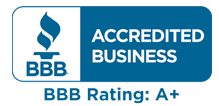Did you know that neglecting regular roof inspections can lead to significant damage and costly repairs in the long run? Well, it’s true. Many homeowners underestimate the importance of roof inspections, unaware of the potential risks they pose. A roof inspection is not just a routine check-up; it serves a crucial purpose in ensuring the health, longevity, and safety of your roof.
Understanding the Importance of Regular Roof Inspections
Regular roof inspections are essential for the ongoing health and performance of your roofing system. By conducting routine inspections, you can prevent potential issues, extend the lifespan of your roof, and save money on costly repairs. Here’s why regular roof inspections are vital:
1. Preventive maintenance: Regular roof inspections allow you to identify and address minor issues before they turn into major problems. By addressing issues early on, you can prevent extensive damage and costly repairs.
2. Extending roof longevity: A well-maintained roof can last significantly longer than one that is neglected. Regular inspections help identify the necessary maintenance and repairs to ensure your roof’s longevity.
3. Early issue detection: Roof inspections enable early detection of potential issues such as leaks, damaged shingles, or deteriorating flashing. Identifying these issues early allows for prompt repair, minimizing the risk of further damage.
4. Roof problem prevention: Regular inspections help identify areas prone to potential problems such as poor ventilation or inadequate drainage. By addressing these issues, you can prevent common roof problems.
5. Cost-effective: Investing in regular roof inspections is a cost-effective strategy compared to dealing with major repairs or roof replacement. By identifying and addressing issues early, you can save money in the long run.
6. Saving money on roof repairs: Regular inspections help identify and address minor issues before they escalate, saving you money on costly repairs. By addressing problems early, you can avoid more extensive damage that may require extensive repairs or even a full replacement.
By prioritizing regular roof inspections, you can proactively maintain the health and performance of your roof. This preventive approach not only extends the lifespan of your roof but also saves you money in the long run. Investing in routine inspections is a wise choice to safeguard your home and ensure the longevity of your roofing system.
Comprehensive Evaluation – The Heart of a Roof Inspection
A comprehensive evaluation is at the core of every thorough roof inspection. It involves a detailed assessment of various elements of your roofing system to ensure its overall health and performance. A comprehensive roof evaluation encompasses:
- Thorough roof inspection: Certified inspectors meticulously examine every part of your roof, including its surface, slopes, and edges, to identify any signs of damage, wear, or deterioration.
- Roofing material assessment: Inspectors closely inspect the condition of your roofing materials, such as shingles, tiles, or metal panels, to determine if they are properly installed and functioning as intended.
- Evaluating workmanship: Inspectors examine the quality of the roof installation, looking for any improper techniques or workmanship issues that could compromise the roof’s integrity.
- Structural evaluation: The structural components of your roof, including trusses, beams, and rafters, are thoroughly inspected for any signs of weakness, damage, or structural issues.
- Roof integrity assessment: Inspectors assess the overall integrity of your roof by examining its ability to withstand external elements, such as wind, rain, and snow, and prevent water intrusion.
- Roof ventilation inspection: Proper airflow is crucial for maintaining a healthy and efficient roofing system. Inspectors evaluate the ventilation in your attic and roof space, ensuring that it allows for adequate airflow and prevents moisture buildup.
- Proper airflow assessment: In addition to ventilation, inspectors also assess other factors that contribute to proper airflow, such as ridge vents, soffit vents, and exhaust fans.
A comprehensive roof inspection considers all these crucial aspects to provide a comprehensive evaluation of your roofing system, enabling homeowners to make informed decisions regarding maintenance, repairs, or replacement.
Continue reading to learn more about what inspectors look for during a roof inspection and how they ensure safety and compliance with building codes.
What Inspectors Look For During a Roof Inspection
During a roof inspection, certified inspectors focus on various aspects of your roofing system to ensure its condition and identify any potential issues. Inspections are crucial for maintaining the health and longevity of your roof. By detecting problems early on, you can address them promptly, preventing further damage and costly repairs.
Here’s what inspectors generally look for during a roof inspection:
- Shingles: Inspectors assess the condition of the shingles, looking for signs of damage, curling, lifting, or missing shingles that may compromise the roof’s integrity. They also check for any excessive granule loss, which can indicate aging or potential problems.
- Flashing: Inspectors examine the flashing, which is used to divert water away from vulnerable areas such as chimneys, skylights, and vent pipes. They ensure that the flashing is intact, properly sealed, and free from corrosion or damage.
- Underlayment: Inspectors evaluate the underlayment, which acts as an extra layer of protection between the roof deck and shingles. They check for any signs of deterioration, tears, or inadequate installation that may compromise the roof’s ability to repel water.
- Sealants: Inspectors inspect the sealants used in various areas of the roof, such as around vents, chimneys, and skylights. They ensure that the sealants are intact, properly applied, and not showing signs of cracking or deterioration.
- Water Damage: Inspectors look for any signs of water damage, such as water stains or rot, which may indicate roof leaks or inadequate drainage. They carefully examine the roof’s interior and exterior for any visible symptoms of water infiltration.
- Gutter Inspection: Inspectors assess the condition of the gutters, checking for any clogs, damage, or improper installation that can lead to water buildup and potential roof problems. They also ensure that the gutters are properly sloped for adequate drainage.
- Proper Drainage Assessment: Inspectors evaluate the overall drainage system of the roof, including downspouts and gutters. They ensure that water is effectively directed away from the roof and foundation to prevent water damage and structural issues.
- Chimney Inspection: Inspectors inspect the chimney, paying close attention to the flashing, mortar joints, and overall condition. They check for any signs of damage or deterioration that may compromise the chimney’s ability to repel water and prevent leaks.
- Skylight Assessment: Inspectors assess the condition and installation of skylights, checking for any cracks, leaks, or improper seals. They ensure that skylights are properly integrated into the roofing system to prevent water intrusion.
- Vent Pipe Evaluation: Inspectors inspect vent pipes for any signs of damage, cracks, or improper seals that may lead to leaks or water infiltration. They also ensure that vent pipes are properly installed and effectively venting moisture from the attic.
By thoroughly examining these key components, certified roof inspectors can provide a comprehensive assessment of your roofing system’s condition, identify any potential issues, and recommend necessary repairs or maintenance measures.
Ensuring Safety and Compliance with Building Codes
In addition to assessing the condition and performance of your roof, inspections also ensure that your roofing system meets safety standards and complies with local building codes. It is essential to prioritize safety and code compliance to protect your property and the well-being of those who live or work in the building.
During a roof inspection, certified inspectors thoroughly examine various factors related to safety and building code requirements. Here are some essential safety considerations and compliance factors that inspectors assess:
- Roof Inspection Safety: Inspectors prioritize safety measures throughout the roof inspection process. They follow proper safety protocols and use appropriate Personal Protective Equipment (PPE) to minimize hazards and ensure a secure inspection environment.
- Building Code Compliance: Inspectors evaluate whether the roofing installation adheres to specific building codes and regulations. This includes assessing the use of fire-rated materials, wind-resistant roofing systems, and following proper roofing installation guidelines.
- Fire-Resistant Roofing: Fire safety is a crucial aspect of building codes. Inspectors check if the roofing materials meet fire-resistant standards. Fire-resistant roofing materials provide an extra layer of protection, reducing the risk of fire-related incidents.
- Wind-Resistant Roofing: Roofing systems must withstand high wind speeds and protect against wind uplift. Inspectors assess the wind resistance capabilities of the materials and installation techniques employed to prevent wind-related damage.
- Wind Uplift Protection: Evaluating the adequacy of wind uplift protection measures is vital. Inspectors check for the correct use of wind-resistant construction techniques, such as roof fastening methods and edge protection to minimize the risk of wind uplift.
Ensuring safety and compliance with building codes not only protects you and your property from potential dangers but also offers peace of mind. By addressing any safety or compliance issues identified during a roof inspection, you can rectify them promptly and prevent further problems down the line.
Conclusion
Regular roof inspections are crucial for homeowners to maintain the health, longevity, and safety of their roofs. By understanding the goals and importance of roof inspections, homeowners can prioritize routine inspections, identify potential issues early on, and address them promptly.
Investing in preventive maintenance and timely repairs can save money in the long run and extend the life of the roofing system. By addressing minor issues before they escalate, homeowners can avoid costly roof repairs or even a full roof replacement. Regular inspections also help to identify areas that may require additional attention, such as gutter cleaning or ventilation improvements.
Additionally, adhering to safety standards and building codes ensures that the roof provides optimal protection for the home. Building codes are in place to ensure the structural integrity of the roof and its ability to withstand various weather conditions. By following these guidelines, homeowners can ensure the safety and stability of their homes.
By taking care of their roofs through regular inspections, homeowners can safeguard their investment and ensure the comfort and safety of their families. A well-maintained roof not only protects the home from the elements but also enhances its curb appeal and value. With the peace of mind that comes from a healthy roof, homeowners can confidently enjoy their homes for years to come.







